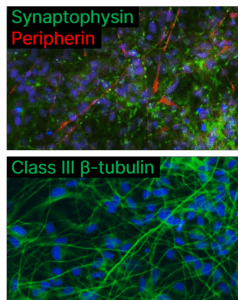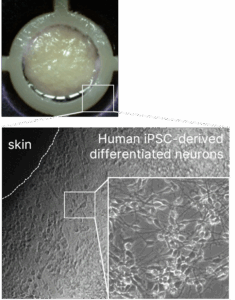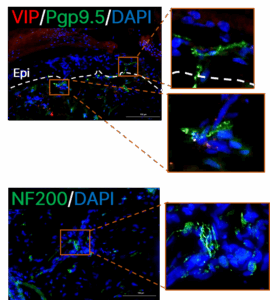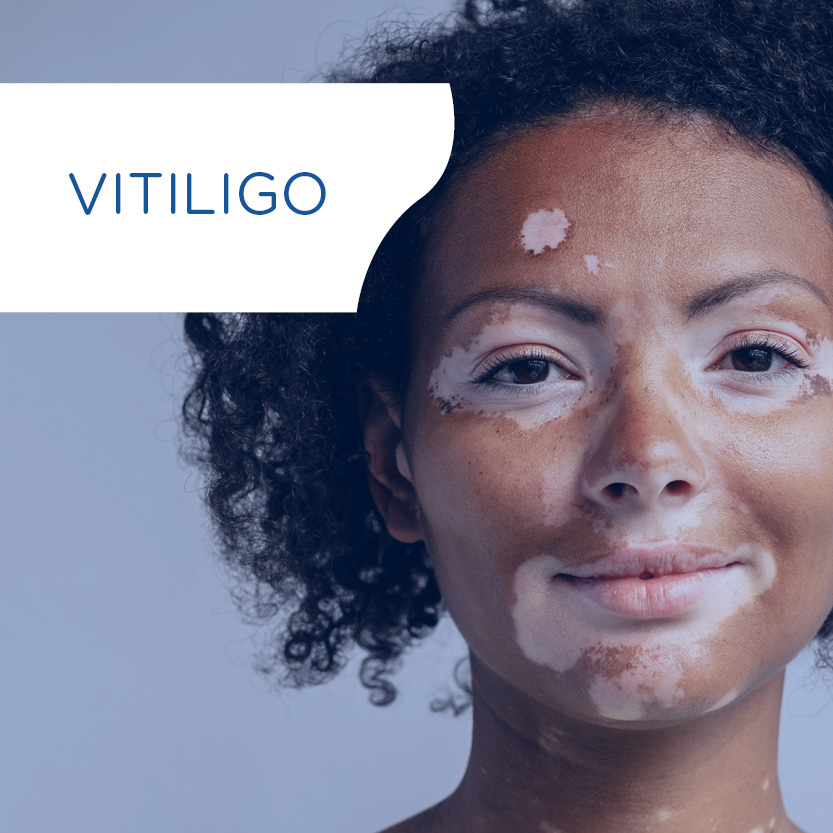Share this Technical Focus
Key takeaway:
The human iPSC-derived sensory neurons re-innervated skin ex vivo model is a valuable animal-free, pre-clinical tool for testing the effects of compounds/drugs on innervated skin.
The model supports efficacy studies on sensitive skin, itch, atopic dermatitis, psoriasis, and other skin conditions. It enables to study the bidirectional cross-talk between sensory human nerve fibers and specific skin and hair follicle cell populations.
Studying skin re-innervation is important for understanding the complex interactions between the skin, nerves, and the surrounding environment. A better understanding of re-innervation and nerve fiber cell cross-talk can lead to improved wound healing and pain management, as well as a better understanding of sensitive skin and itch-related skin conditions.
Download our flyer on our
Human Re-innervated Skin Ex vivo Model
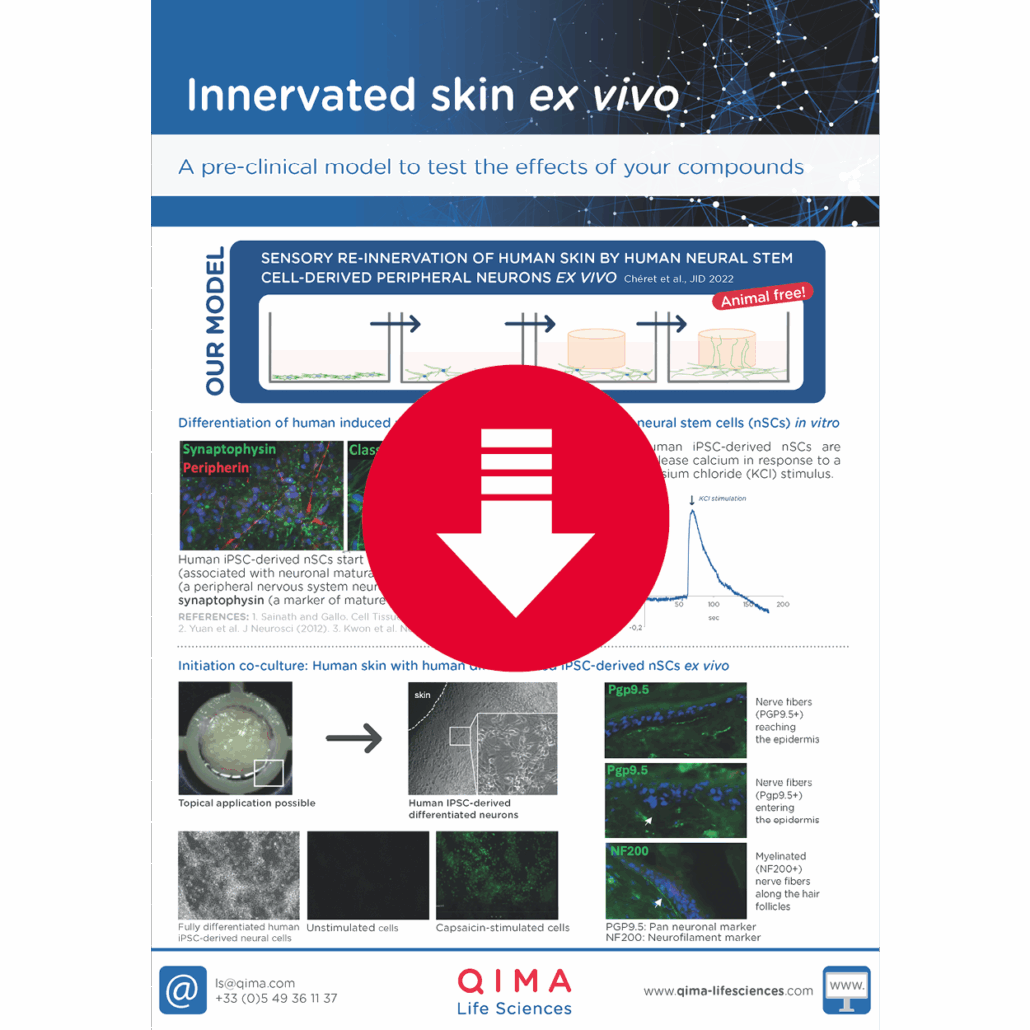
1. Differentiation
Neural stem cells (nSCs) are derived from human induced pluripotent stem cell (iPSC) in vitro. The human iPSC-derived nSCs express class III β-tubulin, peripherin, and synaptophysin, and they are functional, releasing calcium in response to a depolarizing potassium chloride (KCl) stimulus.
2. Co-Culture
Human (scalp) skin with human differentiated iPSC-derived nSCs ex vivo.
3. Full re-innervation
The human (scalp) skin punch is fully re-innervated. Peptidergic and myelinated sensory fibers are present, approximating the in vivo situation.
The fully re-innervated model enables enhanced skin survival, prolonged organ culture conditions, and close contact between nerve fibers and skin cells.
Eager to learn how this model is applied to study mast cell – nerve fiber cross-talk in photoaging?
Download our poster
(ADF 2025)
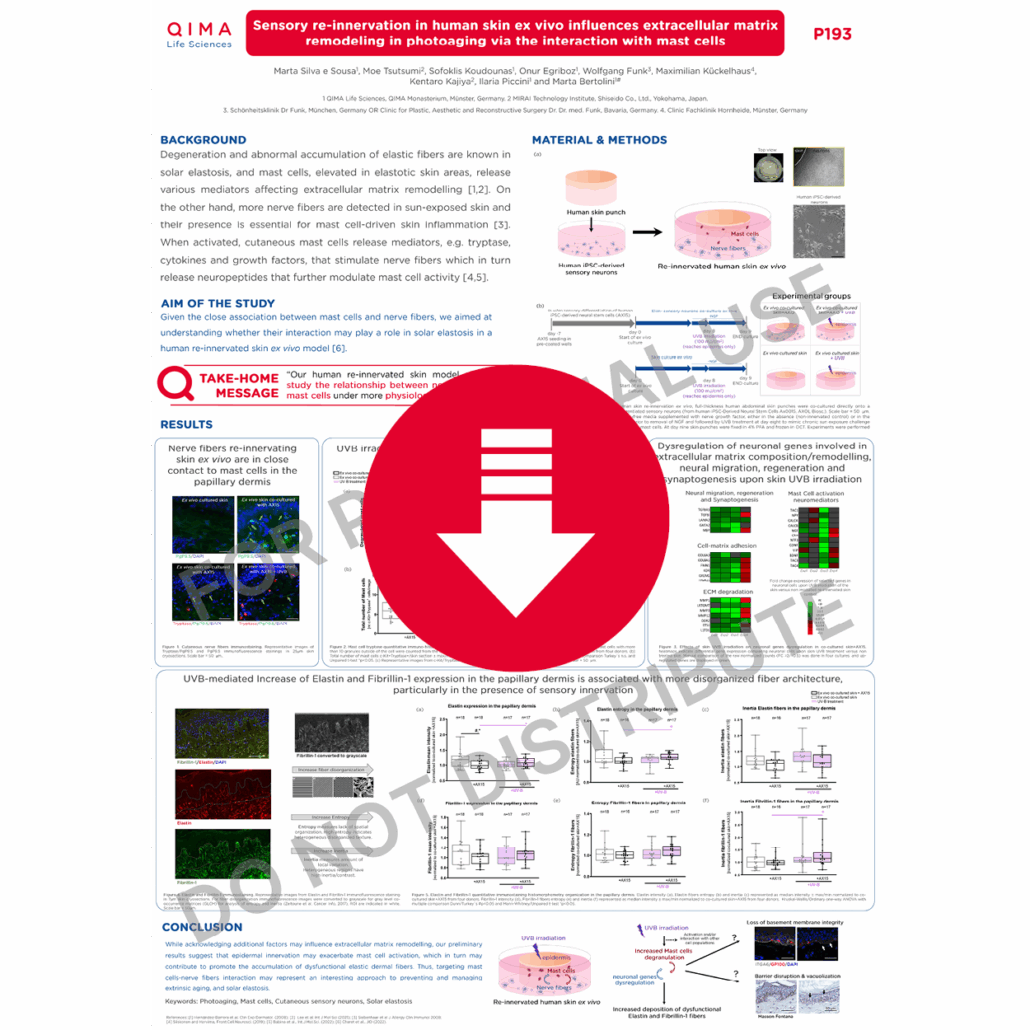
Our model has various applications in dermatology and dermo-cosmetics. Compounds/drugs can be applied systemically and topically.
Sensitive Skin & Itch, Atopic Dermatitis, Psoriasis and other skin conditions
- Differentiated human iPSC-derived nSCs also express IL4R, IL31R, and and other markers relevant to itch.
- The assay can be combined with other disease models ex vivo (e.g. stimulation with IL-4 and IL-13 for mimicking atopic dermatitis).
Bidirectional nerve fiber – cell cross-talk ex vivo
- Dissecting and manipulating the bidirectional communication between defined skin and hair follicle cell populations and sensory human nerve fibers under stringently controlled ex vivo conditions, e.g., cross-talk with melanocytes (Egriboz et al. JID 2025) or mast cells, which is relevant to melanogenesis and photoaging.
- Testing compounds/drugs that target cross-talk between human skin, hair follicles, and cutaneous nerve fibers.
Written & Edited by:
Sabrina Hoefling, PhD
Innovation Marketing Project Leader




